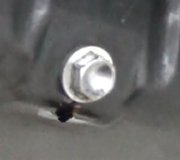It is fairly simple.
1. Disconnect battery cable from the driver side shock tower.
2. Remove the ignition coil pack from the valve cover.
3. Remove spark plug wires. (Mark them so you know which one is which).
4. If you have the 2.4L, remove the ground strap from the valve cover.
5. Label and then disconnect hoses attached to and over the valve cover.
6. Remove all 10 valve cover bolts and lift the valve cover off. If the cover sticks to the head, place a wooden block against the cover and tap on the wood with a hammer.
7. Using a gasket scraper, remove all traces of old gasket material from the valve cover. You may want to clean the cover with some solvent (brake cleaner works great, wipe it dry afterward.)
Installation
8. Install new spark plug tube seals.
9. Install new gasket on the cover using RTV sealant to hold it in place.
10. On 2.4L engine, install the half-round seal, RTV sealant to camshaft cap corners and at the top edges of the half-round seal.
11. Place the cover on the head and install the bolts. Tighten the cover using a criss-cross pattern starting in the middle of the cover and working outwards. Torque them to 105 inch (not foot)/lbs.
12. The rest is reverse of removal.
I don't have any pictures, should you need some you may want to get a Haynes manual 25015, page 2A-4.
SPONSORED LINKS
Tuesday, March 17th, 2009 AT 9:23 PM



